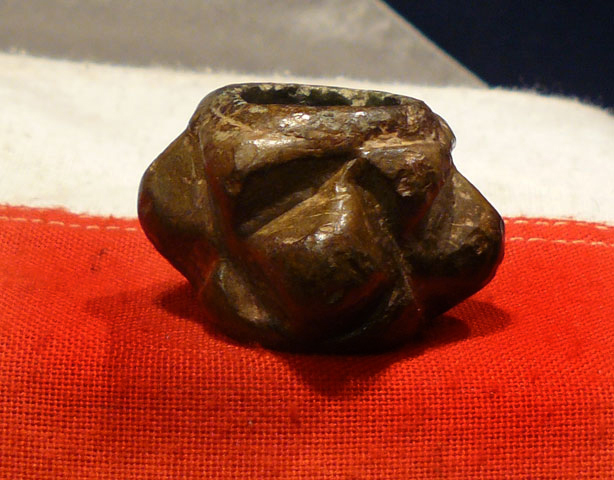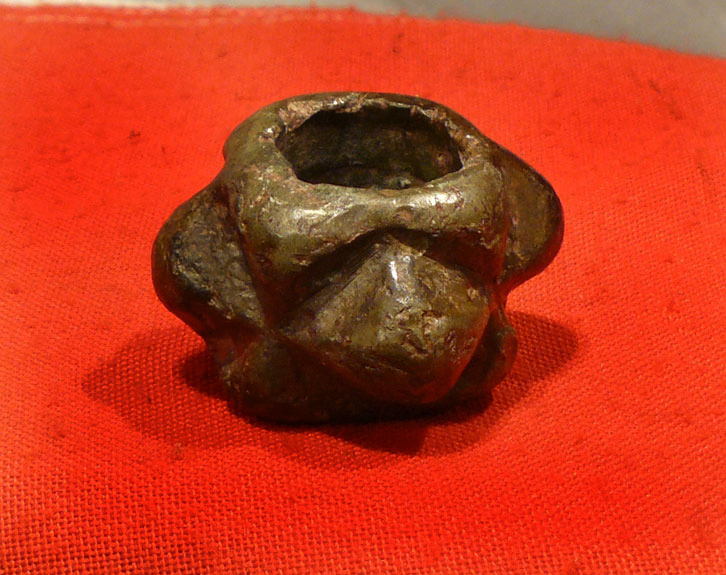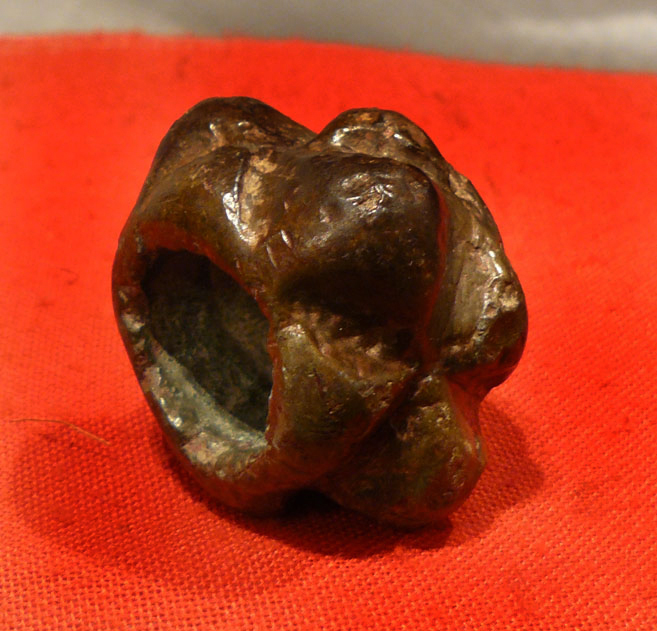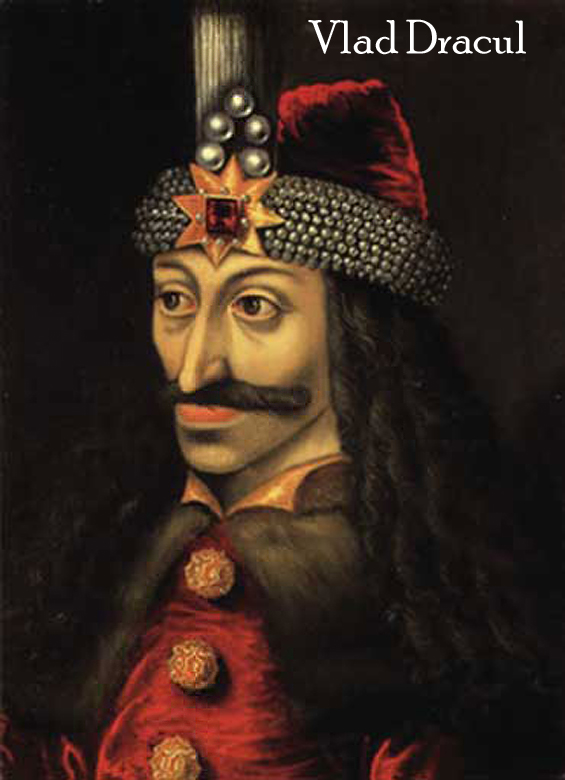Another Fabulous ‘Grand Tour’ Piece of History. An Original Transylvanian/Hungarian 14th-15th Cent. Bronze Mace Head, An Iconic Weapon Of War of the Knights of Vlad Dracul, In The War With Sultan Mehmed IInd Ruler of the Ottoman Empire
From the reign of Vlad Dracul, a name that from which derived the Order of the Dragon. Who was ruler and prince of Transylvania. A bronze mace head formed with a series of low pyramidal points, and in patinated condition throughout. This wonderful original artifact, from Eastern European medieval history, was a most popular close combat weapon for mounted knights of the 14th century and 15th century, and as a highly effective close combat knightly weapon they were continually used right through the 15th into the 16th century. They were used by the Hungarian Knights of the Black Army, and the Transylvanian Knights and mercenary knights that served Prince Vlad the IInd and his son Prince Vlad Dracul, Vlad the IIIrd, the Impaler and the Szekely . They fought across the whole Empire, in Hungary, Transylvania, Romania, fighting against the encroachment of the expanding Ottoman Empire of Sultan Mehmed IInd.
Vlad Dracul of Transylvania inspired the tales of the vampire of legend, named "Dracula". That evolution of Dracul, recalls only the character from the 1897 novel by Bram Stoker, dramatically and memorably realised by Bella Lugosi, in the eponymous 1931 Hollywood horror film, and then followed by all too numerous actors since, including one of the very best, Gary Oldman. However, behind the popular myth lies the genuine historic ruler Vlad III Dracula "the Impaler" (1431-76), Prince of Wallachia in what is now Romania, a vassal of the Hungarian kings. Voivode is the medieval Romanian term for a regional commander, which position Vlad held intermittently in addition to his princedom (1448, 1456-62 and 1476), and the name "Dracula" is a diminutive derived from the Imperial Order of the Dragon, the order of knights to which Vlad and his father, Vlad II (1390-1447) commanded. He ruled his military kingdom of Wallachia southern Romania with a heavy and blood-soaked fist. To not only the Turks but also to many of his own countrymen he was Vlad The Impaler, Vlad Die Tepes (pronounced Tee-pish). Determined not to be overtaken by the intrigue of an intriguing political underhandedness, in a world in which princes fell daily to smiling, hypocritical "allies," paranoia among the aristocracy was, and probably needed to be, utmost in a sovereign's disposition. Dracula built a defence around him that dared not open kindness nor trust to anyone. During his tenure, he killed by the droves, impaling on a forest of spikes around his castle thousands of subjects who he saw as either traitors, would-be traitors or enemies to the security of Romania and the Roman Catholic Church. Sometimes, he slew merely to show other possible insurgents and criminals just what their fate would be if they became troublesome.
A pamphlet published in Nuremburg, Germany, immediately following his death in 1476, tells of his burning beggars after allowing them free food at his court. "He felt they were eating the people's food for nothing, and could not repay it," the broadside explains. And there are countless of other tales of Dracula's wickedness written down ages ago, many of which will be related in this article. This Mace is without haft,and in it's present state it would make a superb cabinet piece, or desk display. However if required we could commission our master cabinet maker to create a replacement haft to replicate how it once would have looked complete. Original paintings in the gallery of Vlad IIIrd and a Knight of the Black Army with mace, and finally an original medeivil portriat of Stephen Lackfi, holding an identical Hungarian mace, he was a knight horseman, and note the Dragon Order shield.
for information only The Szekely are of uncertain origins, subject to much debate among themselves and among scholars. A widespread theory asserts that they descend from the warrior tribes settled by the Hungarians in the border mountains to defend against invasions from Tatars and other menacing people from the east. Szekely people adhere proudly to a Hungarian identity. They have a slightly distinct Hungarian dialect, but most of the differences from modern Hungarian consist of archaic words and phrase constructions, as well as a particular intonation.
In medieval times, the Szekely were part of the Unio Trium Nationum ("Union of Three Nations") a coalition of the three Transylvanian Estates, the other two nations being the (predominantly Hungarian) nobility and the Saxon (ie ethnic German) burghers. These three nations ruled Transylvania, usually in harmony though sometimes in conflict with one another. The Romanian inhabitants, who largely belonged to the class of serfs (which also included many Hungarians), were Orthodox and were not allowed political representation. The Szekely were considered the best warriors of medieval Transylvania. Regular size mace of the period 2 inches at the widest
Code: 22566
995.00 GBP








